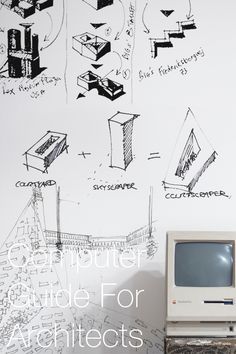
How to Choose a Computer for Architectural Rendering
Architectural rendering requires high-performance computers to handle complex 3D models, rendering software, and large datasets. Whether you are a professional architect or a student, selecting the right computer for your architectural rendering needs is crucial for efficient and fast workflows. In this article, we will guide you through the essential factors to consider when choosing a computer for architectural rendering.
1. Processing Power
The processor is the heart of your computer and plays a fundamental role in architectural rendering. Look for a multi-core processor with a high clock speed, as it can efficiently handle rendering tasks and complex calculations. Processors from Intel Core i7 or i9 series and AMD Ryzen 7 or 9 series are excellent choices for architectural rendering.
2. RAM
Random Access Memory (RAM) is crucial for handling large datasets and multitasking. Aim for at least 16GB of RAM, but if your budget allows, opting for 32GB or more is highly recommended, as it will improve the overall performance and responsiveness of your computer during rendering processes.
3. Graphics Card
A powerful graphics card is essential for rendering tasks. Look for a graphics card with dedicated GPU memory and CUDA or OpenCL acceleration support. Nvidia GeForce RTX series or AMD Radeon RX series graphics cards are widely used and recommended for architectural rendering due to their excellent performance and compatibility with major rendering software.
4. Storage
Rendering involves working with large files, so having fast and ample storage is crucial. A Solid-State Drive (SSD) is highly recommended for the operating system and software, as it provides faster read and write speeds compared to traditional Hard Disk Drives (HDD). Additionally, consider adding a larger capacity HDD or external storage for storing project files and raw data.
5. Display
Investing in a high-quality monitor is crucial for accurately visualizing your architectural projects. Look for a monitor with a wide color gamut, high resolution (at least 1080p or higher), and good color accuracy. Consider a larger screen size to enhance your workflow and minimize the need for excessive scrolling or zooming.
6. Cooling System
Rendering can put a heavy load on your computer, generating a significant amount of heat. To prevent overheating and ensure stable performance, choose a computer with an efficient cooling system. Look for features like multiple fans, heat sinks, and sufficient airflow to keep your computer’s components cool during intensive rendering tasks.
7. Software Compatibility
Before purchasing a computer, consider the software you will be using for architectural rendering. Ensure that the hardware specifications of your chosen computer meet the recommended requirements for the rendering software of your choice. This will help avoid performance issues and compatibility conflicts.
8. Budget
Lastly, consider your budget. Building or buying a high-performance computer for architectural rendering can be expensive. Evaluate your budget and prioritize the components that are most critical for your workflow. It is better to invest in a reliable computer that meets your immediate needs while allowing for upgrades in the future.
In conclusion, when choosing a computer for architectural rendering, prioritize processing power, RAM, graphics card, storage, display, cooling system, software compatibility, and your budget. Conduct thorough research, consider your specific rendering requirements, and make an informed decision. A well-equipped computer will not only enhance your productivity but also provide a smooth and efficient workflow for your architectural rendering projects.


